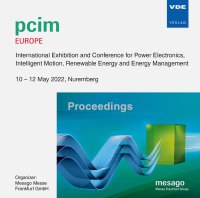Use of an NSGA-II Genetic Algorithm and Active Gate Driving to Improve Simulated GaN Power Electronic Switching Waveforms
Konferenz: PCIM Europe 2022 - International Exhibition and Conference for Power Electronics, Intelligent Motion, Renewable Energy and Energy Management
10.05.2022 - 12.05.2022 in Nürnberg, Germany
doi:10.30420/565822051
Tagungsband: PCIM Europe 2022
Seiten: 10Sprache: EnglischTyp: PDF
Autoren:
Leonovs, Sergejs; Jahdi, Saeed; Dymond, Harry C. P.; Stark, Bernard H. (University of Bristol, UK)
Inhalt:
This paper investigates the use of Evolutionary Multi-objective Optimization (EMO) algorithms to automatically optimise active gate driver patterns for hard-switched GaN bridge-legs. In the paper, a simulation model of an active gate driver is developed for dynamic GaN transient shaping. Pattern discovery across a Pareto-optimal solution space is performed using a multi-objective Non-dominated Sorting Genetic Algorithm (NSGA-II). Three key measurable indicators are used to give each gate pattern performance metrics. These include: GaN device drain current overshoot, switching energy loss, and post-edge current ringing derived from spectral analysis of the current waveform. Active gate driving results are compared against the baseline of constant-resistance gate driving. We demonstrate the use of inequality constraints to refine the search space by circumscribing the optimisation region, resulting in a faster convergence. Simulated results show that an active gate driver under control of an NSGA-II-based pattern generator would be capable of finding unique optimal gate drive patterns that, simultaneously reduce current overshoot, ringing, and switching loss. Ringing is typically a result of parasitic loop inductance of the layout interacting with device parasitic capacitance. It is shown that beneficial patterns can be found for a range of values of parasitic loop inductances, and that active gate driving could therefore help to compensate for parasitic loop inductance that may be unavoidable due to, for example, voltage clearance and creepage distances.


